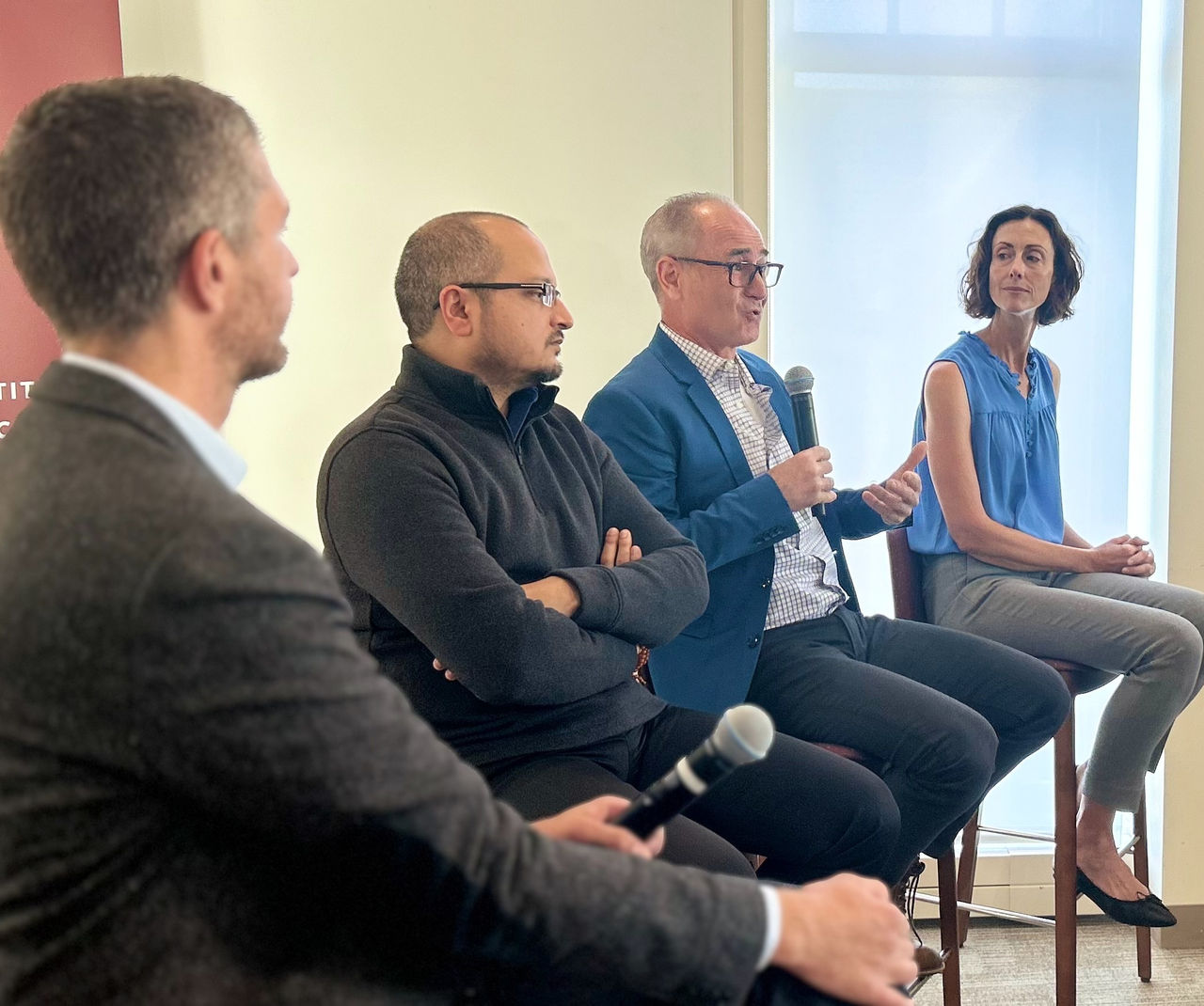The human impacts of climate change
First “Climate Is Every Story” panel looks to bridge climate and public health.
By Genevieve Morrison ‘27
Summer Sherburne Hawkins, a social epidemiologist and professor in BC’s School of Social Work, believes that communication between scientists and the public is essential to addressing the health impacts of climate change. But actually communicating about her own research is challenging.
“Writing an op-ed was one of the hardest things I've ever done,” Hawkins said to an audience gathered at the Schiller Convening Space at BC on Oct. 1, but "that's actually what is maybe going to move the needle.”

Hawkins, whose research includes studying the impacts of extreme heat on pregnant women, was part of the inaugural panel for the four-part “Climate is Every Story” event series, which seeks to foster dialogue about climate change between journalists and BC students and faculty. The series is co-sponsored by the Schiller Institute for Integrated Science and Society, the Institute for the Liberal Arts, and the Environmental Studies and Journalism programs at BC. At the first event, “Public Health, Common Good,” faculty and journalists confronted the complexities of covering climate change’s impacts on health and found common ground in their distinct approaches.
For New York Times economy editor Patrick McGroarty, ‘06, who moderated the panel, one dilemma journalists face is how to write about a topic that is “kind of a downer” for an audience that might be weary of bad news. “The bigger challenge for well-meaning journalists is not one about establishing truth from fiction, but about finding interest in something that is rather familiar,” McGroarty said.
Jason Beaubien, Peabody award-winning journalist and a former Africa correspondent for National Public Radio, agreed. According to him, not every climate story needs to be labeled as one. Instead, by reporting the real-world consequences of climate change as they occur, journalists can let the facts speak for themselves.
“Lake Winnipesaukee did not freeze entirely last year. You don't need to tell me this is a climate-related story, I just find it interesting.” Beaubien said. “I don't think you need to absolutely hit people over the head with this. It doesn't need to be the lede of the story.”
McGroarty added that solutions journalism—an approach to reporting that emphasizes how people are solving societal problems, rather than just covering the problem itself—has offered a fresh way to give audiences “something they didn't expect” without belaboring well-trodden truths.
Praveen Kumar, an engineer-turned-sociologist and associate professor at BC's School of Social Work, has also taken on the challenge of communicating his research to the public. In op-eds about climate-related health issues published in the Hindustan Times and the Times of India, he said he emphasizes themes of injustice.
“What I really take is the human angle, or the justice angle, which I have really found has really struck a chord with policymakers and also with the local communities.” Kumar said.
In Bangladesh, for example, Kumar studied how climate-related extreme weather had wiped out rural farms, prompting a wave of urban migration by out-of-work farmers. While this was a society-level problem, Kumar explained, he approached it by interviewing the displaced farmers themselves.
“These narratives don’t picture very easily when we talk about big data, but these are where the real problems exist, and perhaps this is where some of the real solutions will come up,” Kumar said. “That’s why I think we should really delve into stories.” In this approach, Kumar found commonalities with the journalists, who often seek out individuals impacted by climate change to tell their stories.
But public health conversations also need large-scale data. Hawkins, who studies population-level data to monitor whether certain policy approaches to health problems actually help solve those problems, said she sees her role as that of a watchdog on the macro level.
“We need the individual stories, we need the community-level factors, and I’m here to contribute to say, ‘What are people trying? Is it working?” Hawkins said.
Beaubien noted the parallels between data and storytelling in journalism, adding that academic studies can anchor reporting on individual stories, as well as deepen the impact of journalistic storytelling on the climate.
“It’s also really important to have good data in your stories. Having powerful graphs that show change, having facts that you can present, is really useful as a journalist” Beaubien said. “All of this does play together.”
After the panel discussion, the visiting journalists had an opportunity to meet with students and faculty over lunch and afternoon networking sessions. Future events in the “Climate Is Every Story” series will focus on covering climate change as local news, climate change’s impacts on migration and changing communities, and the business of climate change.



